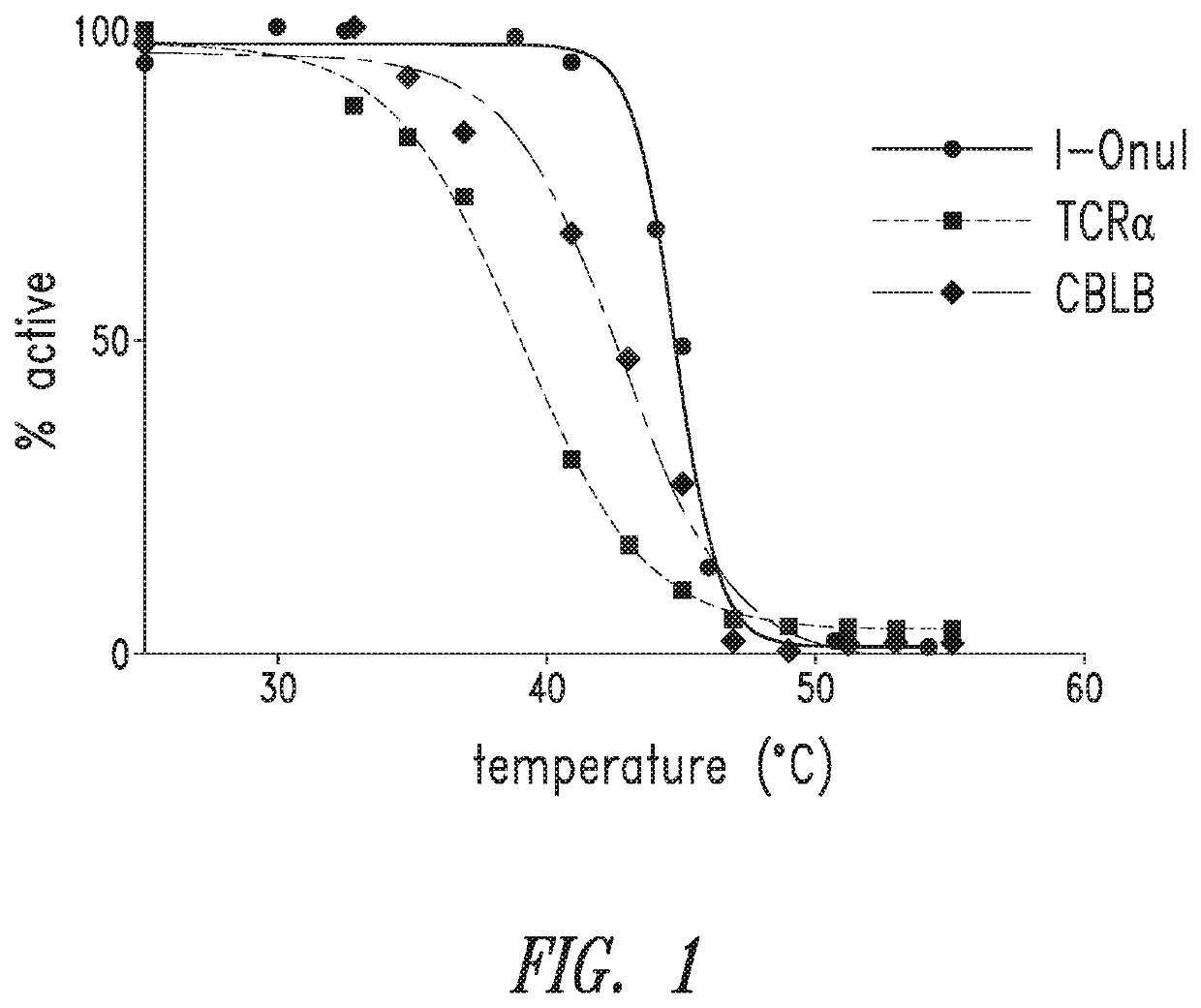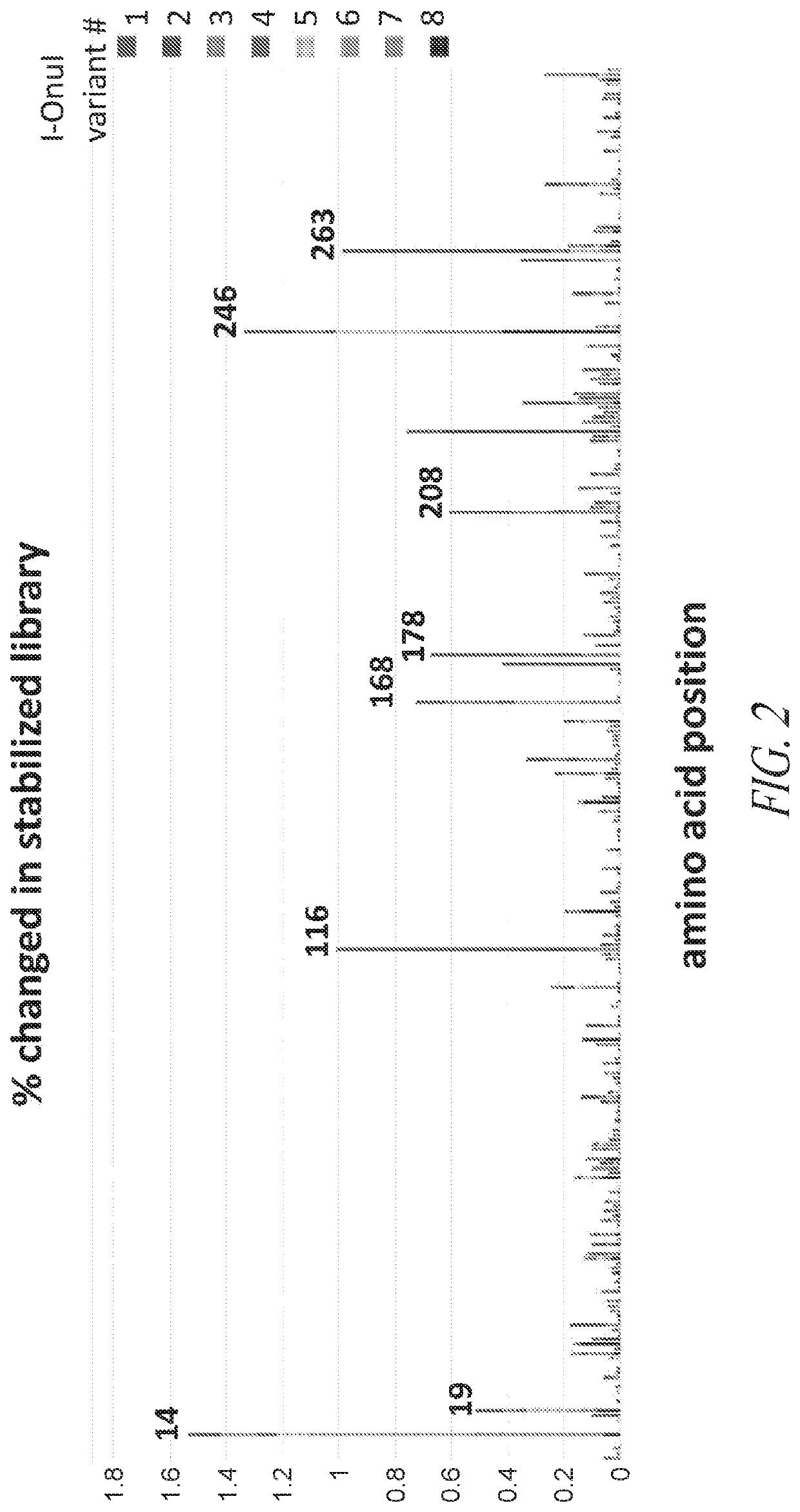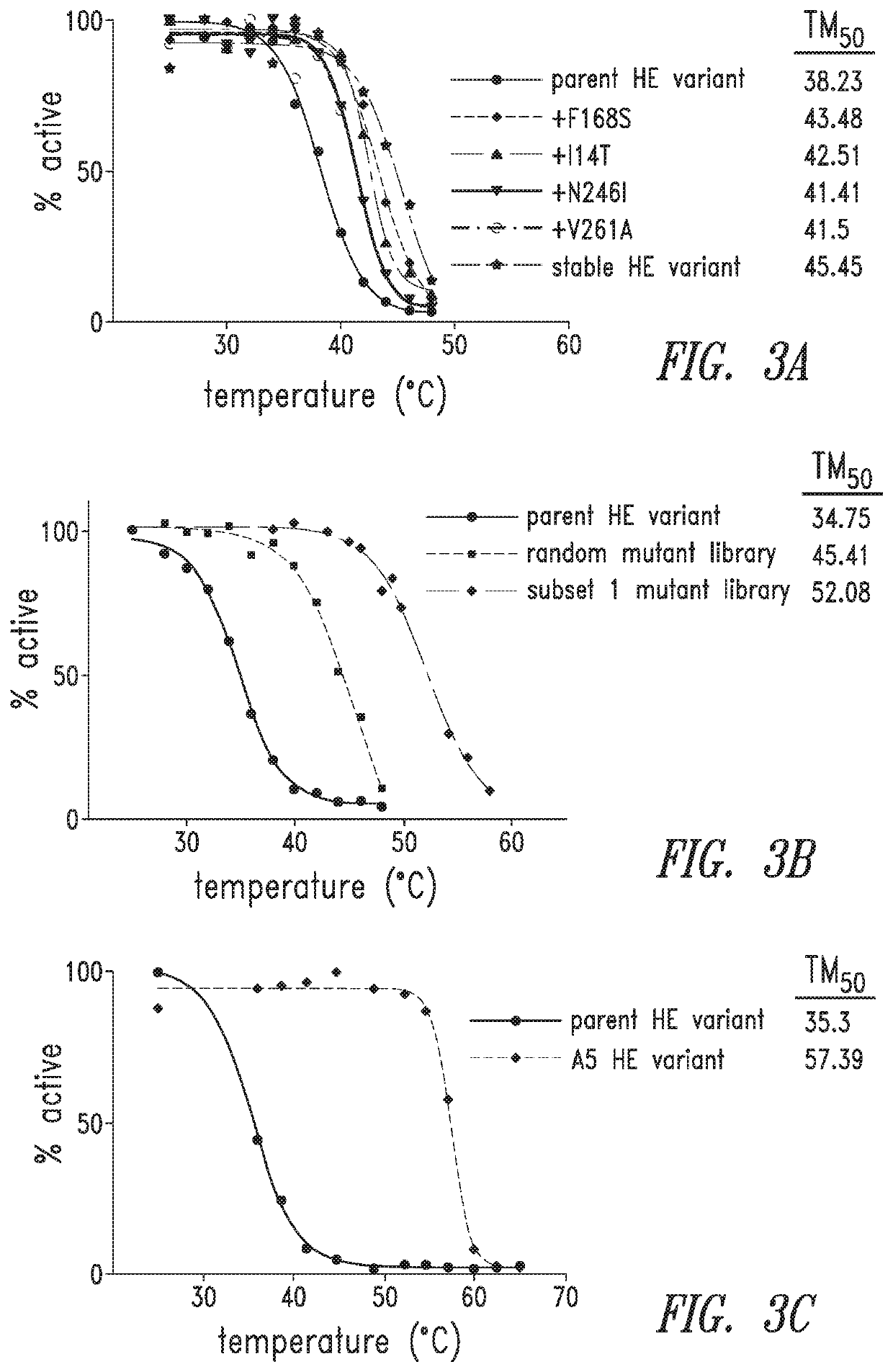Homing endonuclease variants
a technology of endonuclease and variants, which is applied in the direction of hydrolases, dna/rna fragmentation, biochemistry apparatus and processes, etc., can solve the problems that the current state of the art of most genome editing strategies fails to meet some or all of these criteria, and cannot be realized, so as to improve the catalytic activity of the enzyme, improve the stability and activity, and improve the thermostability of the enzym
- Summary
- Abstract
- Description
- Claims
- Application Information
AI Technical Summary
Benefits of technology
Problems solved by technology
Method used
Image
Examples
example 1
Identification of Amino Acid Positions in a Laglidadg Homing Endonuclease that Increase Thermostability
[0328]A yeast surface display assay was used to identify mutations that increase the thermostability of LAGLIDADG homing endonucleases. First, the stability of I-OnuI (e.g., SEQ ID NO: 1) and engineered nucleases (e.g., SEQ ID NOs: 6 and 7) was measured. After nuclease surface expression was induced in the yeast, each yeast population was subjected to heat shock at multiple temperatures for 15 minutes, and the percent of nuclease expressing cells still able to cleave its DNA target was measured by flow cytometry. This assay generates a standard protein melt curve with an associated TM50 value for each endonuclease. FIG. 1.
[0329]To identify mutations that lead to increased stability, multiple I-OnuI derived homing endonucleases were subjected to random mutagenesis via PCR over the entire open reading frame. These mutant libraries were expressed in yeast and sorted for active nucleas...
example 2
Combinatorial I-OnuI HE Stabilizing Mutations Increase Thermostability
[0330]To further increase I-OnuI HE variant thermostability, the most frequently mutated amino acid positions were combined in a single library. Starting with BCL11A I-OnuI HE variant (SEQ ID NO 8), residues 14, 153, 156, 168, 178, 208, 261 and 300 were mutated using degenerate codons and PCR (subset 1 mutant library). Sorting of this library at a relatively permissive temperature of 46° C. resulted in a population of variants that were 10° C. more stable than the products from a random mutant library (FIG. 3B). One representative BCL11A I-OnuI HE variant from the subset 1 mutant library (A5, SEQ ID NO 14) showed an unexpected 22° C. increase in thermostability compared to the parent I-OnuI HE variant (FIG. 3C). Combinatorial mutations derived from either random mutagenesis or directed mutagenesis increase I-Onu HE variant thermostability.
example 3
Mutations that Increase Thermostability can be Transferred Between I-OnuI HE Variants
[0331]To determine if stabilizing mutations are unique to each reprogrammed I-OnuI HE variant or whether stabilizing mutations can be transferred between enzymes, the mutations from the BCL11A A5 I-OnuI HE variant (SEQ ID NO: 14) were transferred to I-OnuI HE variants that target PDCD-1 (SEQ ID NO: 6), TCRα (SEQ ID NO: 7), or CBLB (SEQ ID NO: 15). With these mutations, the TM50 of an I-OnuI HE variant that targets the human PDCD-1 gene was increased by 16° C. (SEQ ID NO: 16), the TM50 of an I-OnuI HE variant that targets the human TCRα gene was increased by ˜14° C. (SEQ ID NO: 17), and the TM50 of an I-OnuI HE variant that targets the human CBLB gene was increased by 19° C. (SEQ ID NO 18). FIGS. 4A-4C. Mutations that increase thermostability were transferrable among different I-OnuI HE variants.
PUM
 Login to View More
Login to View More Abstract
Description
Claims
Application Information
 Login to View More
Login to View More - R&D
- Intellectual Property
- Life Sciences
- Materials
- Tech Scout
- Unparalleled Data Quality
- Higher Quality Content
- 60% Fewer Hallucinations
Browse by: Latest US Patents, China's latest patents, Technical Efficacy Thesaurus, Application Domain, Technology Topic, Popular Technical Reports.
© 2025 PatSnap. All rights reserved.Legal|Privacy policy|Modern Slavery Act Transparency Statement|Sitemap|About US| Contact US: help@patsnap.com



